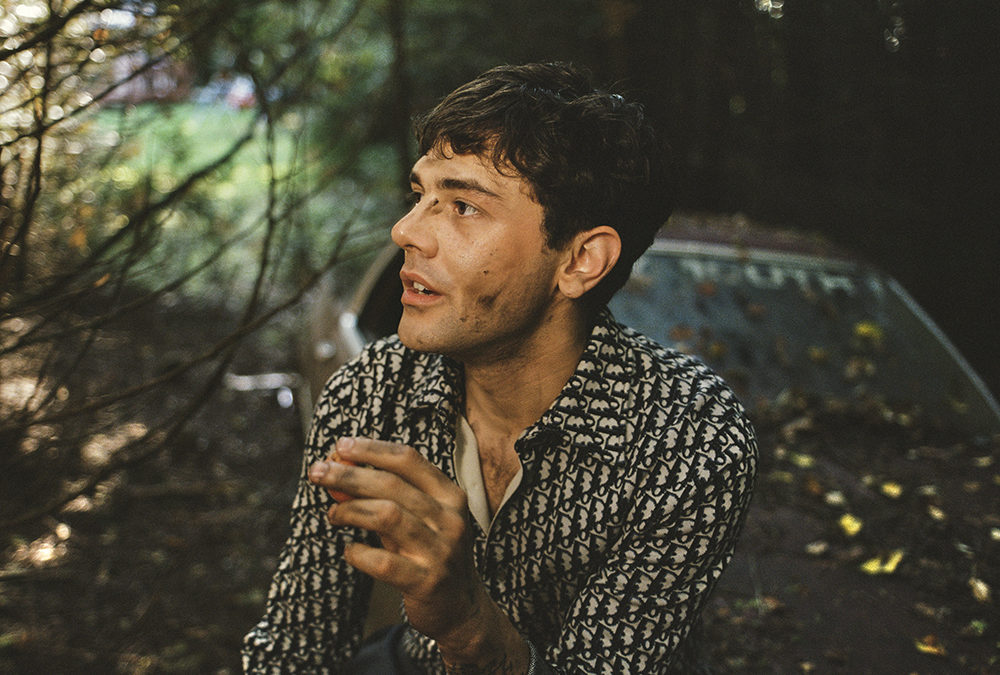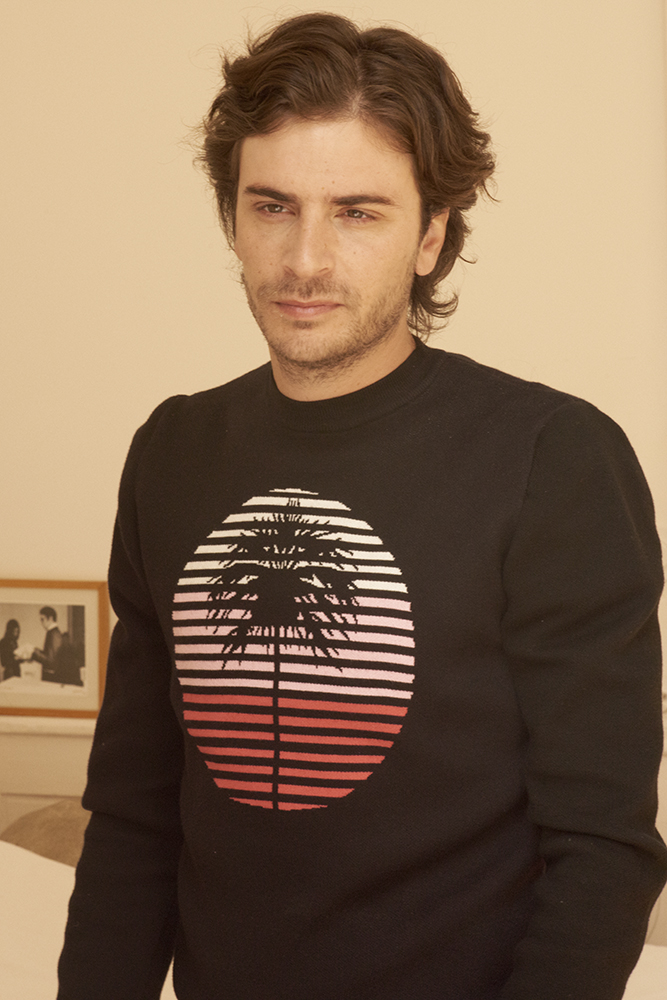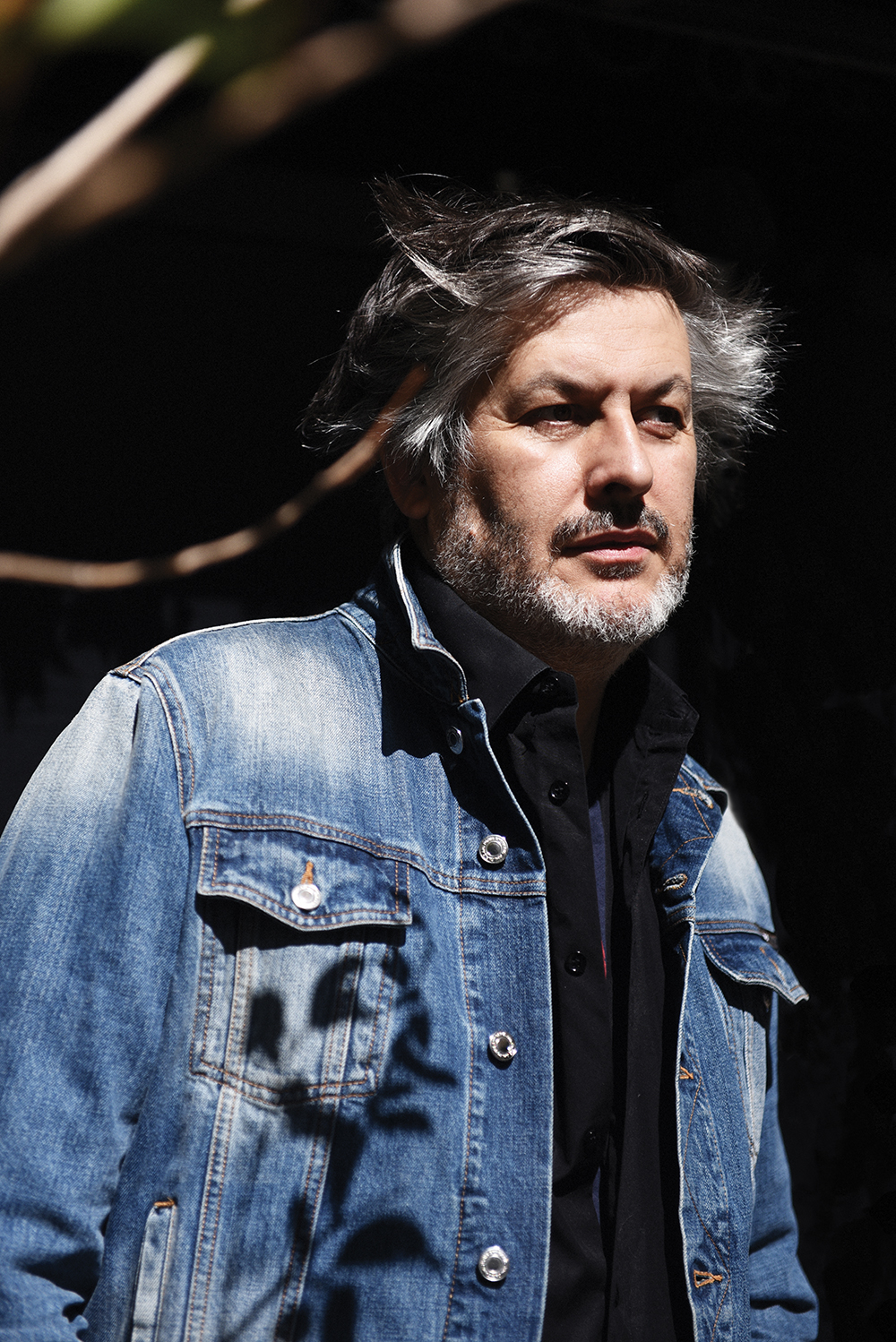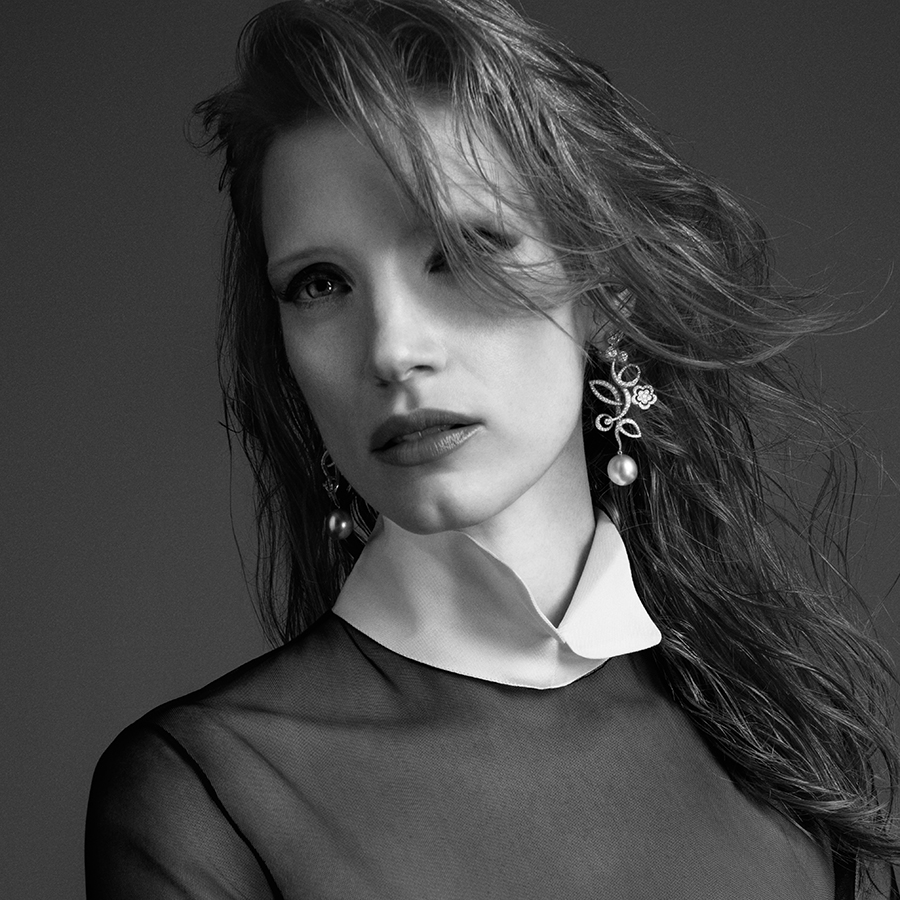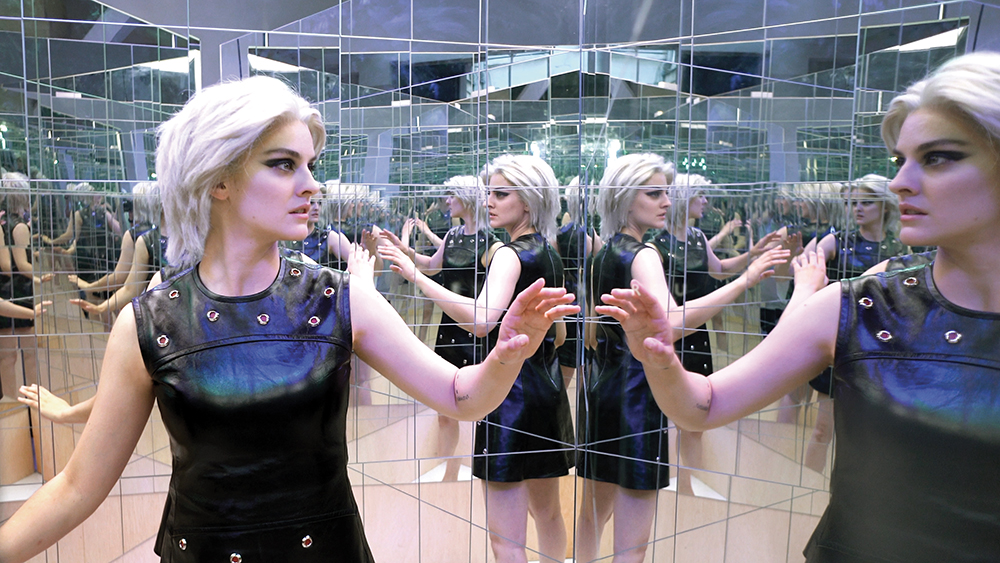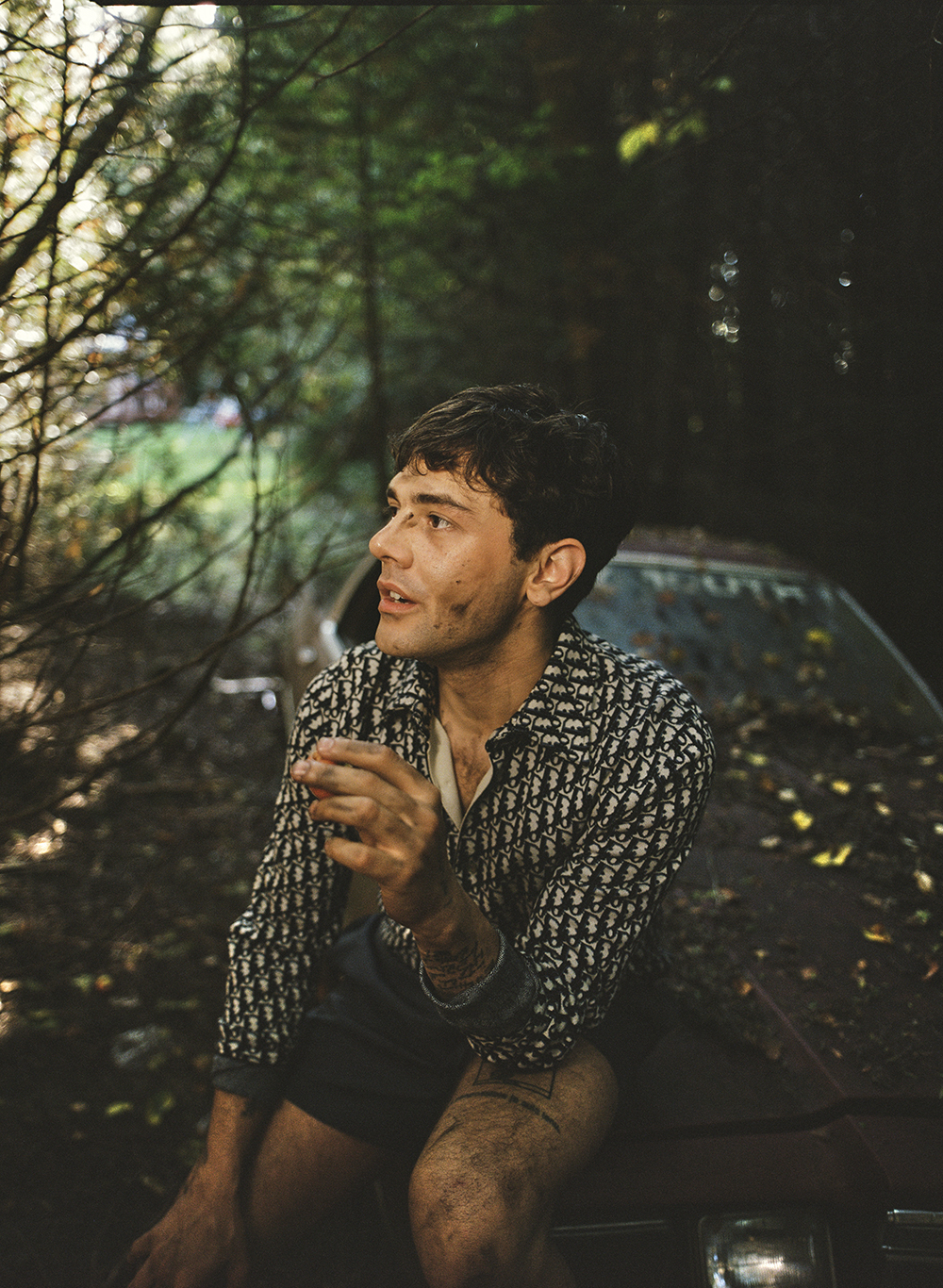
Collection Homme, Dior – Cotton knitted shirt, “Dior Oblique” jacquard all-over, shorts
A MEETING BETWEEN XAVIER DOLAN & ARMELLE LETURCQ
By Armelle Leturcq
No list of the decade’s top films would be complete without Xavier Dolan, whose movies have electrified arthouse theaters around the world. The Quebecois director has crafted a sensitive and sensorial kind of film that centers on the psychology of complex characters. In just ten years, from I Killed My Mother to Matthias & Maxime, he has sealed his reputation as a filmmaker of rare and unique talent on both sides of the camera. In 2020, as we enter a faster, more digital and more dehumanized new era, we wanted to find out what Xavier Dolan thinks about the future and what political commitment means to him.
You got the phrase, “L’oeuvre est sueur” (“Work is sweat”), tattooed on your leg. We want to know more about your creative process.
Okay.
Does your creative work start with writing?
Yes.
How much time do you spend writing before shooting?
It depends on the project. Some go fast and without a hitch. Others are more drawn out. I wrote I Killed My Mother all in one burst, in just a few hours without stopping. Then I wrote Donovan over a few years. But I would say I generally write a script in a month or a month and a half. There are several rewrites afterwards, of course, based on notes from friends and artists working on the project. Preparing the shoot leads to a few tweaks, too.
How much does your personal life overlap with your films?
Though people seem to assume that all my films are autobiographical based on what I hear and read, only two of them are truly about me, and only in part. The others, on the other hand, however personal or intimate they may seem, remain purely fictional. I listen to everyone around me in my life, whether it’s strangers, acquaintances, close friends, or whoever. The way they laugh, their problems, their flaws, their strengths, their tics: all that inspires me. The more intentional and unique people are in their lives, the more I want to talk about them. I guess that’s how my personal life overlaps with my work life, by including these details, aspects and traits of people who make an impression on me in my films.
What is your everyday life like? How do you manage to concentrate and shut out the outside world in order to write your scripts?
When I’m not shooting, there’s nothing especially original or special about my daily life. I write, I exercise, I go out for a walk, I go to a dubbing session. I eat out with friends in the evening or invite them over to watch a movie. I have to get away to write. I create the optimal environment. But the truth is that I am very easily distracted. Like most of us, I am not immune to a snack or video chat. I can write intensely for an hour, or even two, sometimes three – but beyond that I slowly drift away into wasting time, and, more specifically, playing Tetris.
What are the biggest challenges you face when producing and directing your films?
Since I first started out, my career has been like a massive cycle through many different situations. I Killed My Mother was self-financed and erratically shot. Heartbeats was privately funded… Laurence Anyways, following the critical success of the first two films, was supported by several institutions in Quebec and Canada – we finance films in Quebec just like in France, through government subsidies. Tom at the Farm was done on a shoestring as a co-production – a tiny film designed to be made quickly and in no time. Mommy, It’s Only the End of the World, Donovan and Matthias & Maxime were all financed quickly and generously, and I’m very thankful for that fact. Not everyone has the privilege to shoot whenever they want and however they want.
When making a movie, do you feel relatively free or sometimes limited? Or even censored?
Not at all. I decided to take fate into my own hands by producing my films on my own at first. Then, Nancy Grant came into my life. She’s everything I could want in a producer: creative, clever, cultured, funny – and excessively critical! I’ve always surrounded myself with people who can offer me criticism, even if it’s tough. As nice as they are, compliments do not help you move forward. Criticism from friends or colleagues – as long as it isn’t biased or bitter – has always helped me see my mistakes and learn my lesson. And I’m always making new mistakes!
Do you have to make certain concessions to make your movies?
Always! I try to make the right choices. There are concessions, but also compromises. Instead of giving in to pressure, whether from budget limitations or anything else, I prefer to find a simpler and better idea instead. In this sense, limitation, at least in the indie film world, is often the mother of invention. It’s an evil that leads to something good. On bigger movies, however, limitations are a pain in the neck. There’s nothing worse than not having the means to realize your ambitions.
Film distribution and production methods are changing dramatically. Are you willing to direct for platforms such as Amazon or Netflix?
Absolutely. If it still exists, for films, a future in theaters first.
Do you think of yourself as a politically active director?
I’m committed to making movies that can be useful to the people who watch them…
Find the rest of the interview in Crash #91.
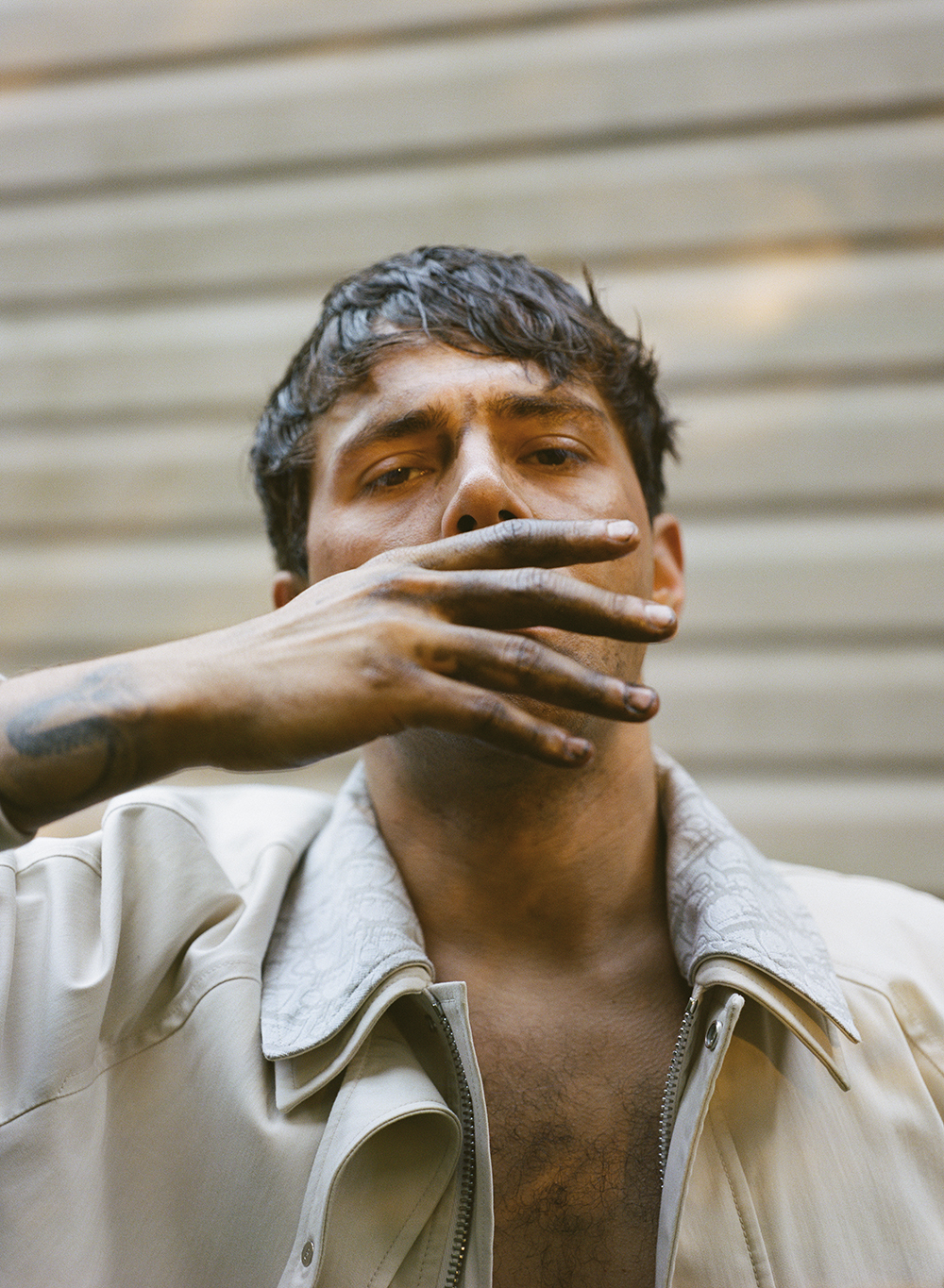
Collection Homme, Dior – Wool and mohair canvas short-sleeve blouson with shirt collar.
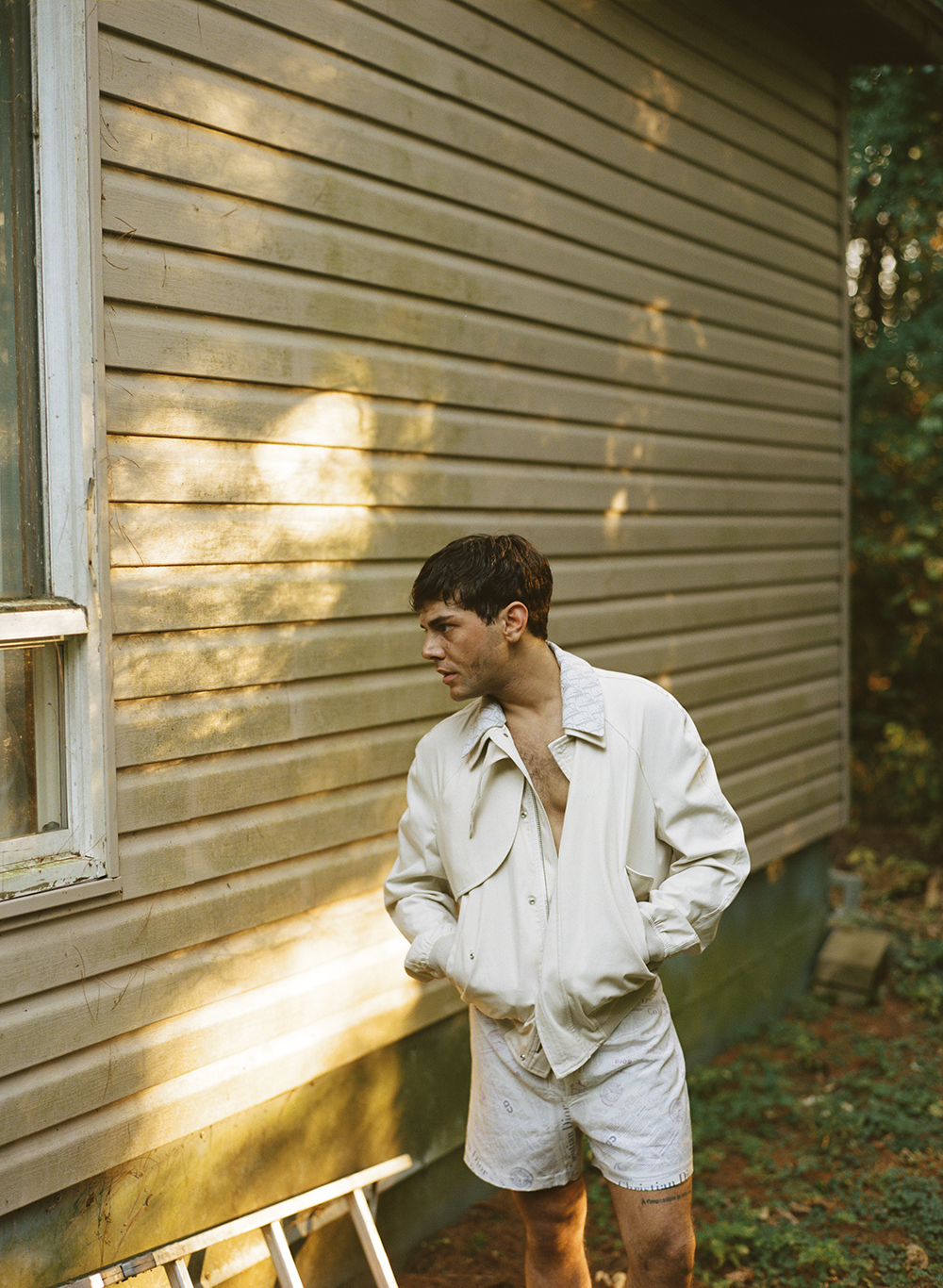
Collection Homme, Dior – Wool and mohair canvas short-sleeve blouson with shirt collar, wool twill shorts
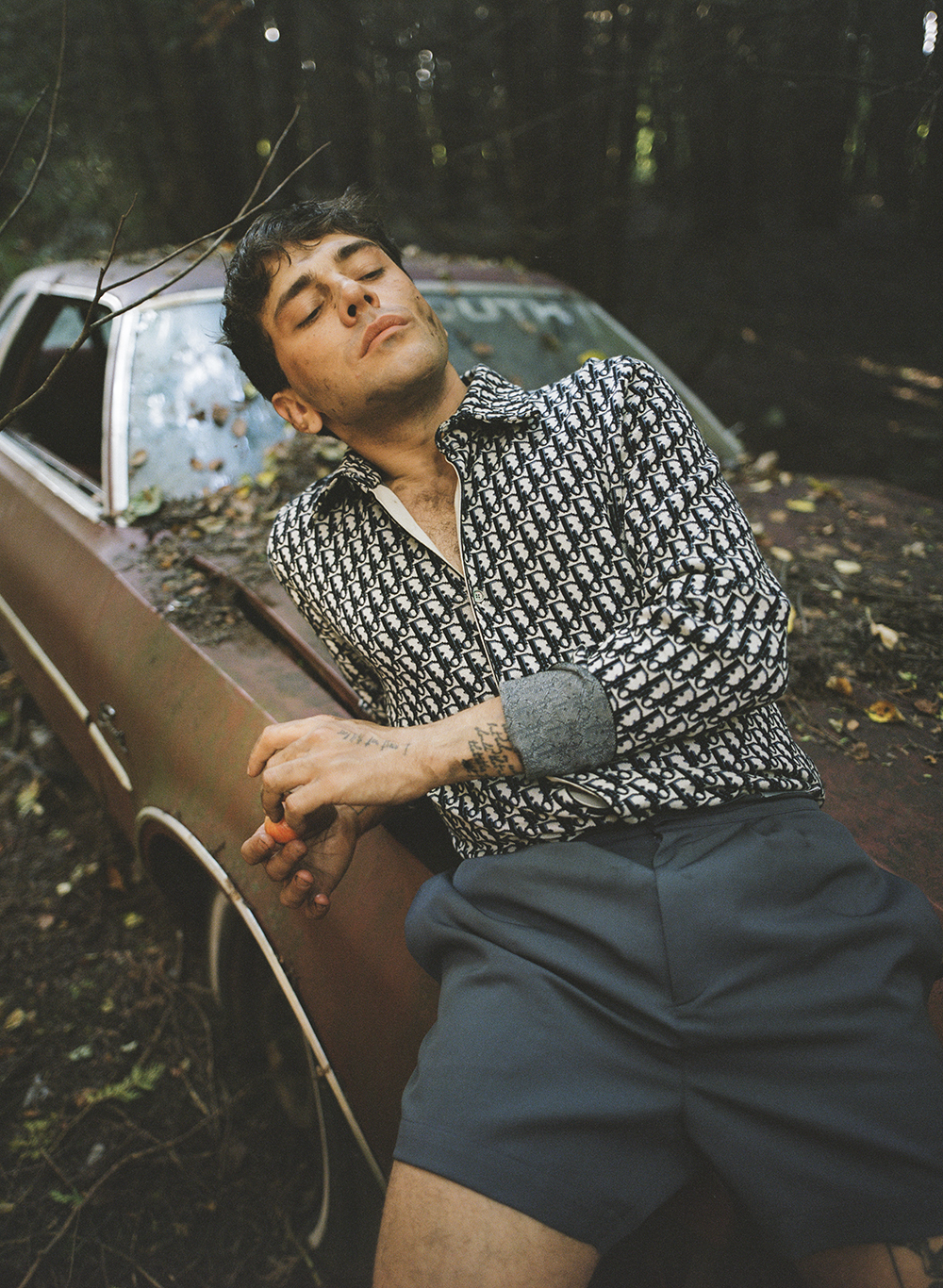
Collection Homme, Dior – Cotton knitted shirt, “Dior Oblique” jacquard all-over, shorts
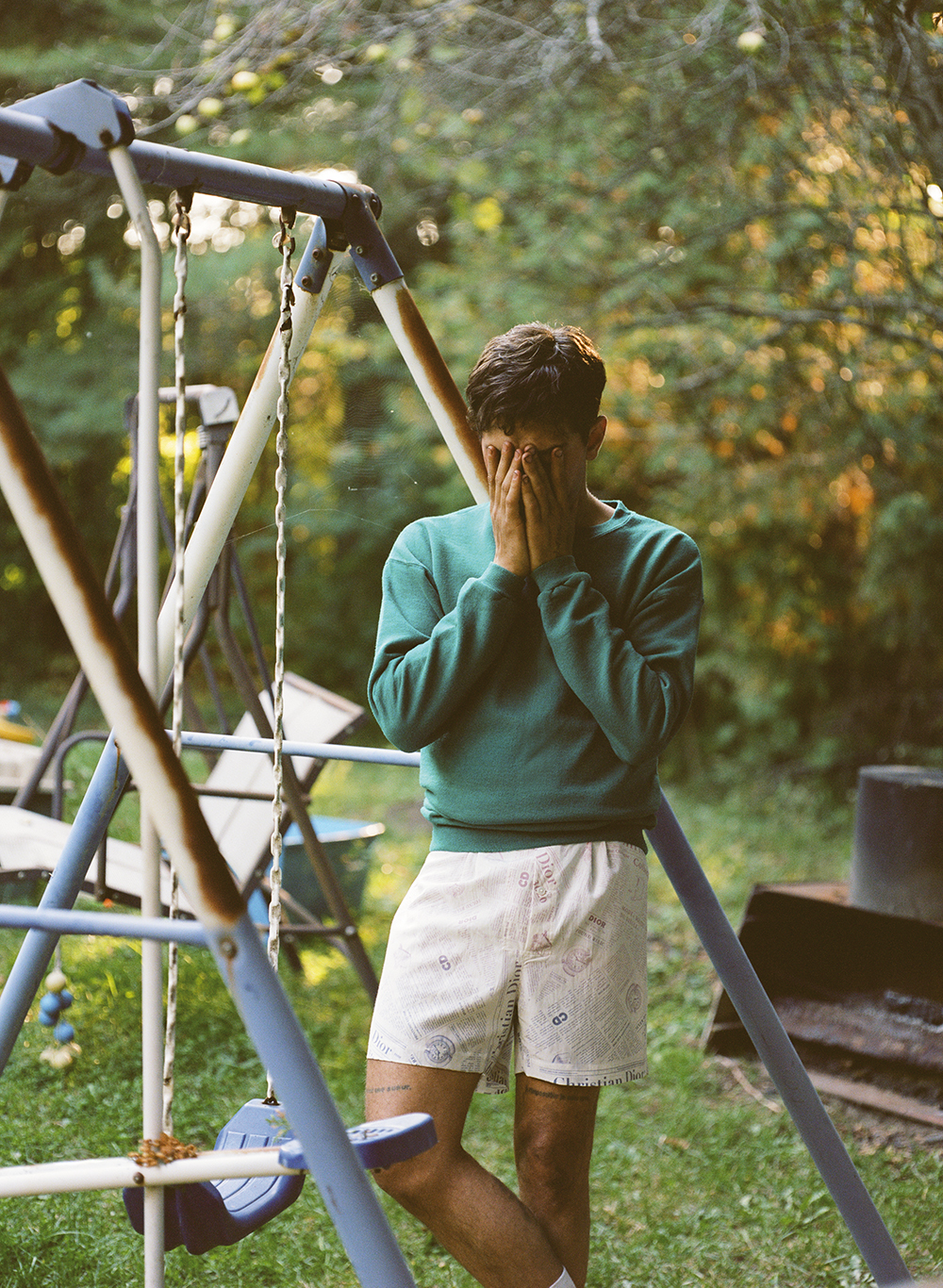
Collection Homme, Dior – Cotton and silk poplin underwear, dégradé pink and blue Dior and Daniel Arsham print
Xavier’s own sweater
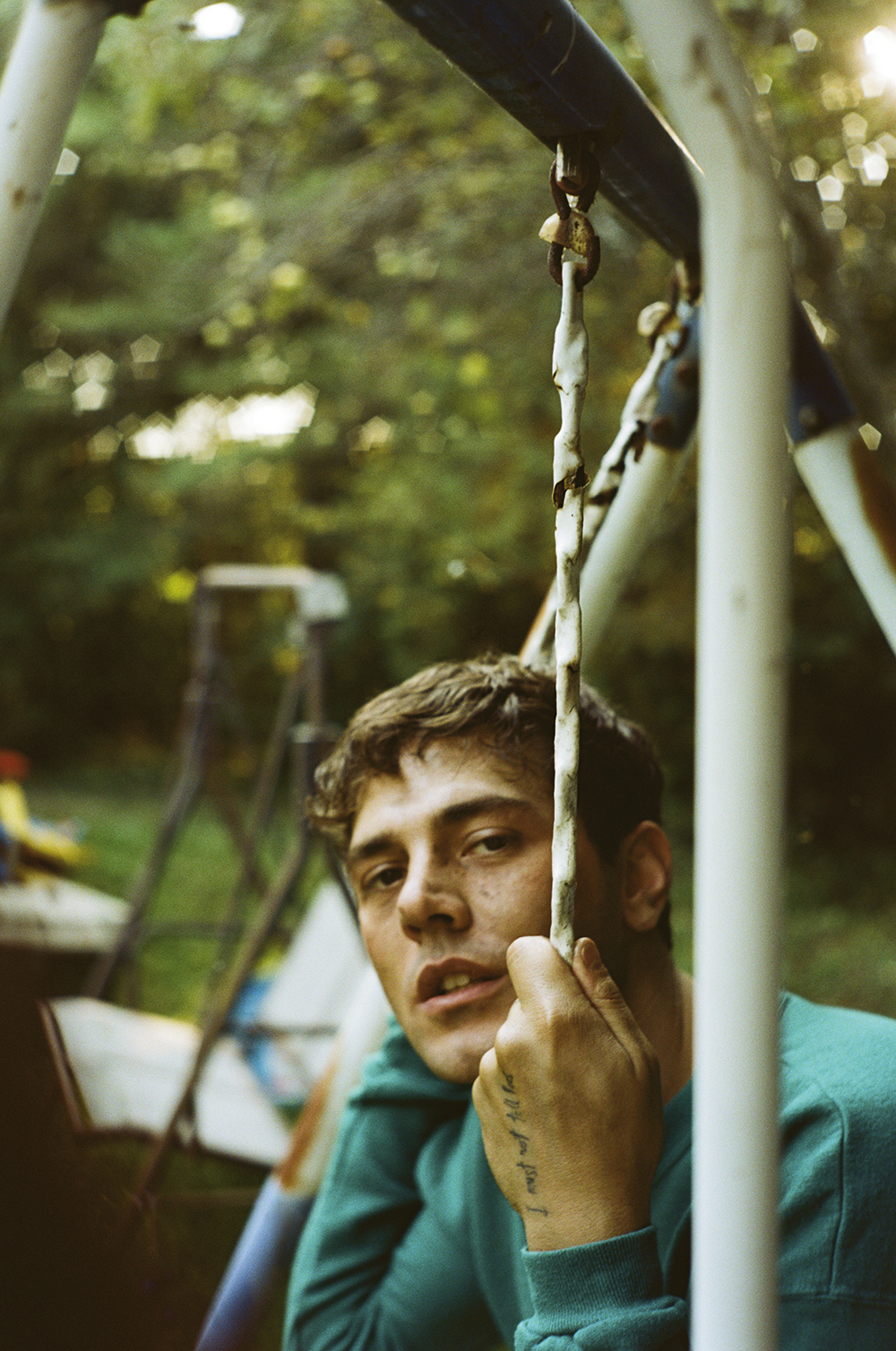
Xavier’s own sweater
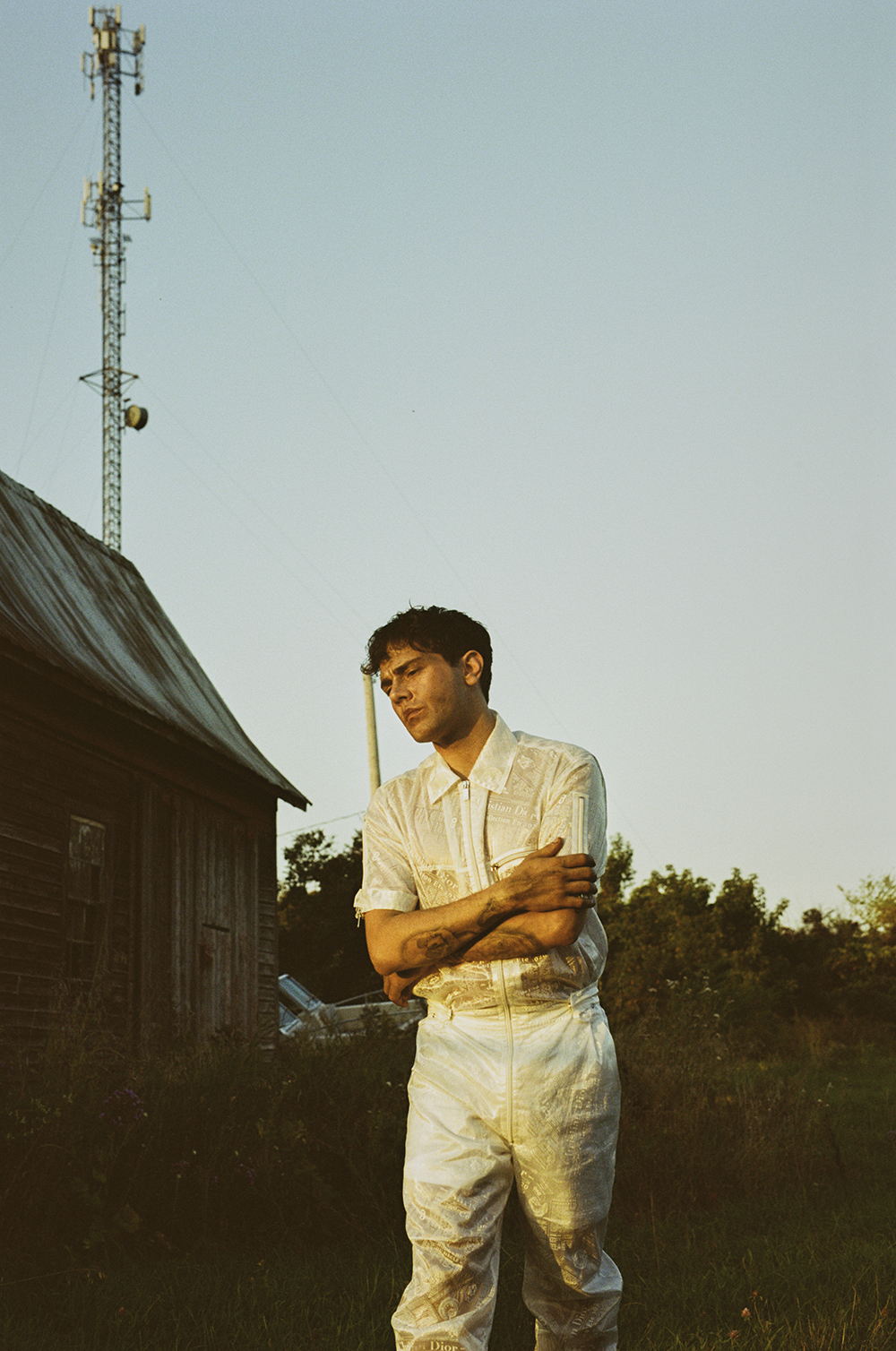
Collection Homme, Dior – Technical cotton satin crêpe shirt-collar bomber jacket with cannage embroidery, tone-on-tone contrast chintzy canvas, cotton and silk poplin underwear, Dior and Daniel Arsham all-over print
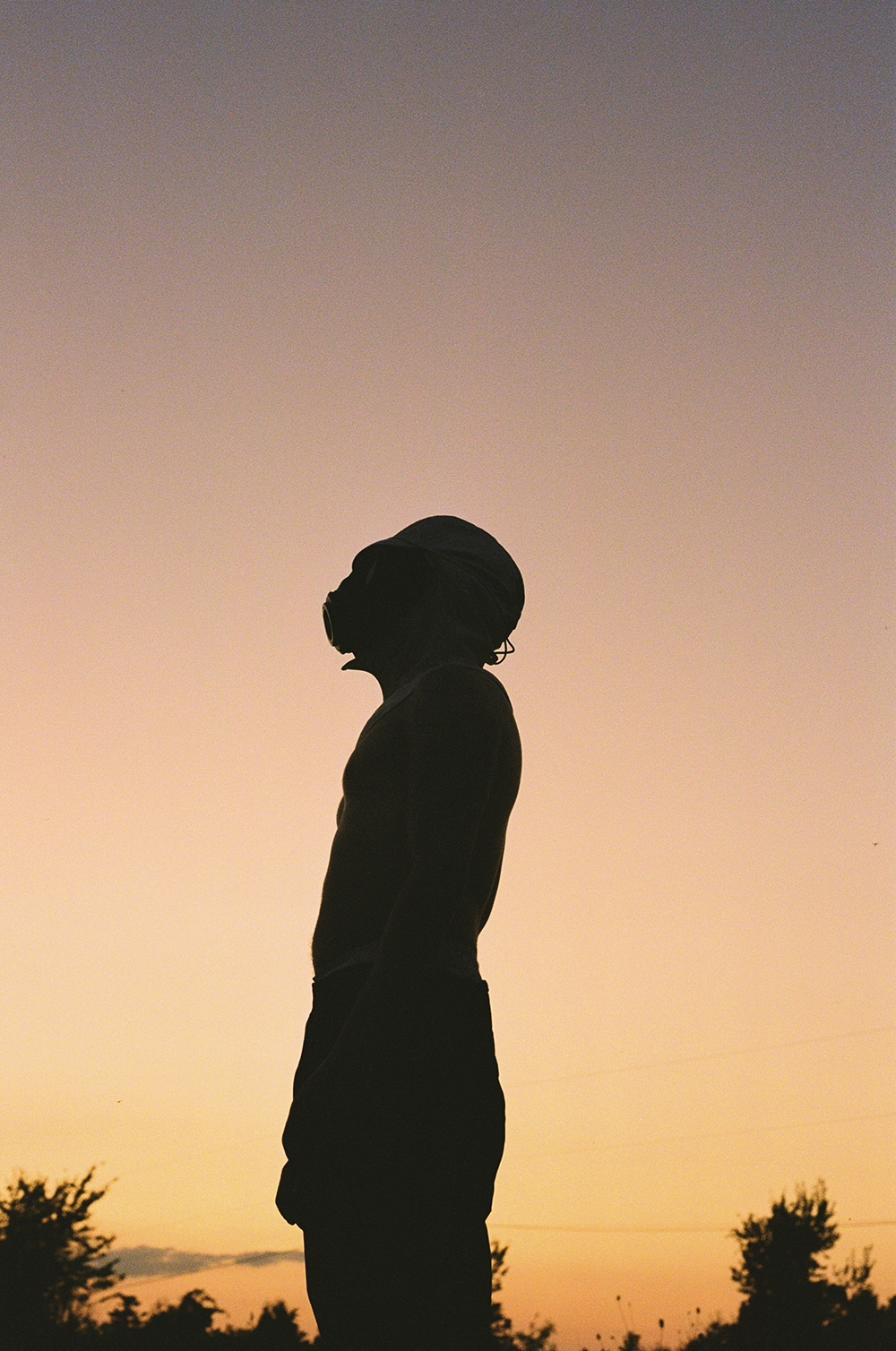
***
Interview: Armelle Leturcq
Photography: Shayne Laverdière
Styling: Xavier Dolan






